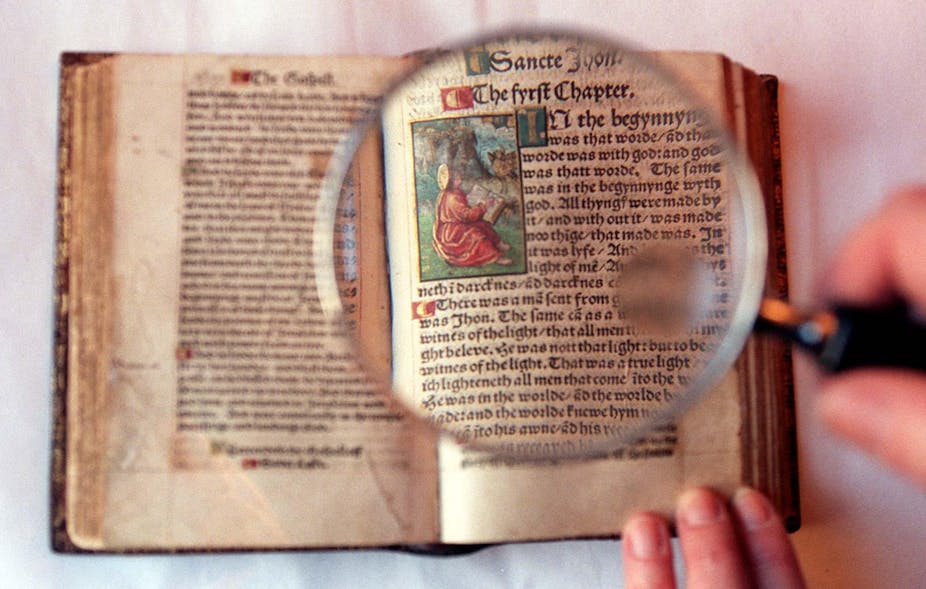DSM-5, the latest version of the Diagnostic and Statistical Manual of the American Psychiatric Association, was published in the US at the weekend.
Given that not even its most passionate supporters would call it a good read, it had already attracted unusual levels of attention. There has already been an avalanche of serious comment pieces, magazine articles, blogs and the occasional sensationalist Daily Mail headline.
Why is it proving so controversial? The DSM is nothing more than a list of psychiatric disorders, accompanied by descriptions and explicit criteria for their diagnosis. It’s also not new – it’s the fifth such revision – although given the propensity of the association to trot out revisions on a regular basis, there have been at least eight since 1952.
The DSM is important in the US – unless your disorder is in the manual you won’t be treated. Or more accurately, you can be treated but your therapist won’t be reimbursed by your insurance company, which amounts to the same thing.
But the manual also important because it tells us something about the state of psychiatry.
Mission creep?
Early versions of the DSM did not attract much attention or controversy. Much of American psychiatry was dominated by psychoanalysis, which doesn’t give central importance to diagnostic categories as every patient is considered a unique individual. It was not until DSM III came along in 1980 that people really started to take notice – and to complain.
The first problem was the increasing number of diagnoses. In 1917, the APA recognised 59 psychiatric disorders. When DSM-I was published in 1952 it had 128. By 1987 there were 253. DSM-IV has 347.
We are promised that DSM-5 (now designated by digits rather than Roman numerals to make revisions easier) will reduce the total for the first time. I’m not holding my breath.
Given that the real number of mental disorders, whatever that may be, is unlikely to be increasing at a similar exponential rate, it’s not surprising that the cry has gone up that this represents psychiatric mission creep – a dastardly plot by the profession to extend its influence into more and more aspects of our daily lives and thoughts.
Indeed, there is evidence for a medicalisation of the normal, the eccentric and the odd. It seems increasingly difficult to find shy children anymore – instead it’s now a social phobia. Who these days is called bookish or eccentric, as opposed to someone suffering from Asperger’s?
When you bring big pharmaceutical companies into the picture – who have occasionally been caught colluding in the creation or expansion of psychiatric disorders in order to create new markets for their drugs – it’s not surprising that the new DSM is being greeted with a storm of criticism.
The difficulty of classification
But the reality is a little different. Psychiatric classification is difficult because we are restricted to largely symptomatic descriptions of disorders, as opposed to leukaemias or endocrine disorders, for example, which are based on very detailed knowledge of the actual pathological processes that underlie clinical symptoms.
Psychiatry is not at that stage yet, and as Gary Greenbergpointed out recently in the New Yorker, things have not changed much since the superintendent of a Massachusetts asylum wrote in 1886: “in the present state of our knowledge no classification of insanity can be erected on a pathological basis.”
We are on the brink of new discoveries that will transform our understanding of major mental disorders such as schizophrenia and bipolar and a recent Lancet paper reported common genetic markers linking five major disorders. But until that point it’s not surprising that when it comes to classification, a hundred flowers still bloom.
One common assumption is that it is the psychiatrists that are seeking to extend the boundaries. But you can argue that teachers also have an incentive to promote the growth of psychiatric labels – children with ADHD or Asperger’s are likely to make you eligible for more classroom assistants than difficult or unruly children. Some parents will prefer to put their child’s problematic behaviours down to genes or disordered development than inconsistent or absent parenting.
When Allen Frances, one of the architects of DSM-IV but now the leading critic of DSM-5, started to repudiate his own contribution to expanded diagnostic boundaries in autism, he was greeted with open hostility from many parents of children who had been diagnosed with one of its looser definitions.
The raging arguments over DSM have been more muted in the UK. Unlike the US, it isn’t necessary to be a perfect fit with a DSM category to be treated. A GP may decide to treat unhappiness as a case of depression, but it won’t involve consulting the APA’s latest bible.
Many mental health professionals will also be shaking their heads at the outrage that DSM-5 has generated, in particular the claim that it’s all an underhanded plot by the professionals.
For psychiatrists, the biggest threat is the opposite. Far from extending our empire, most of us are faced with the biggest reductions in funding and services we can remember.
In a recession, mental health services suffer first and foremost compared to acute care.
For most psychiatrists the current reality is trying desperately to protect services to ensure that those whose mental disorders are indisputable – in any classification system – do not lose out. The idea that we are looking for new markets seems far fetched.
A two-day conference into DSM takes place at the Institute of Psychiatry from June 4th-5th.

